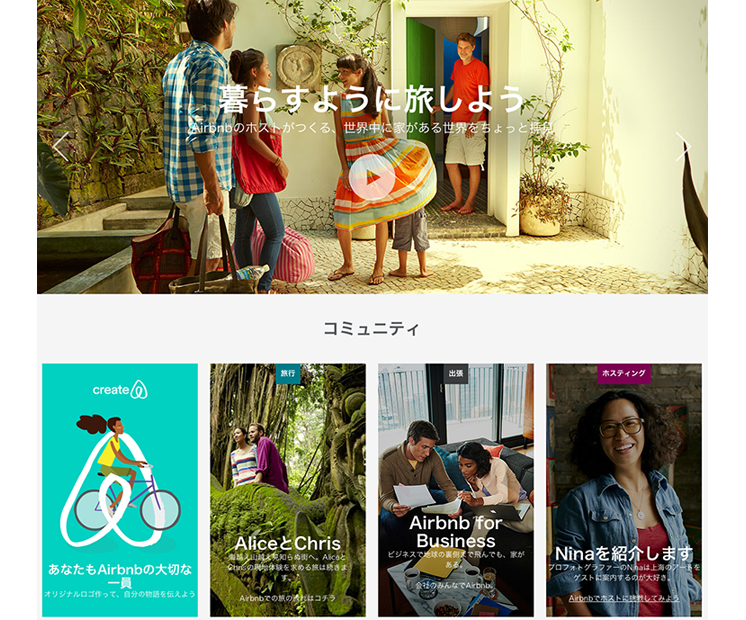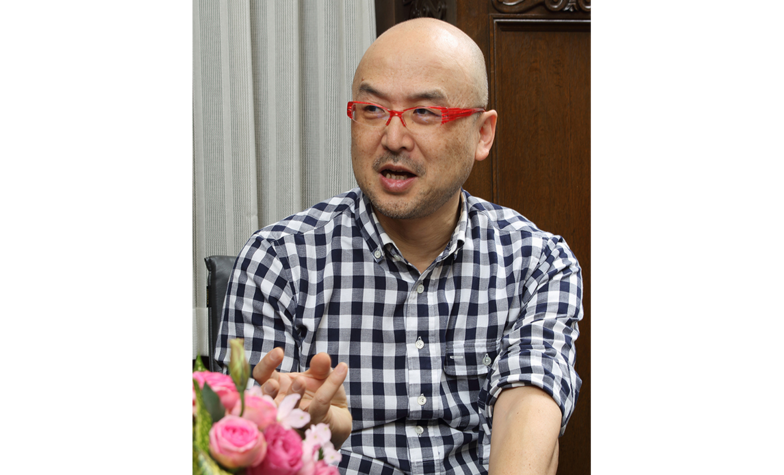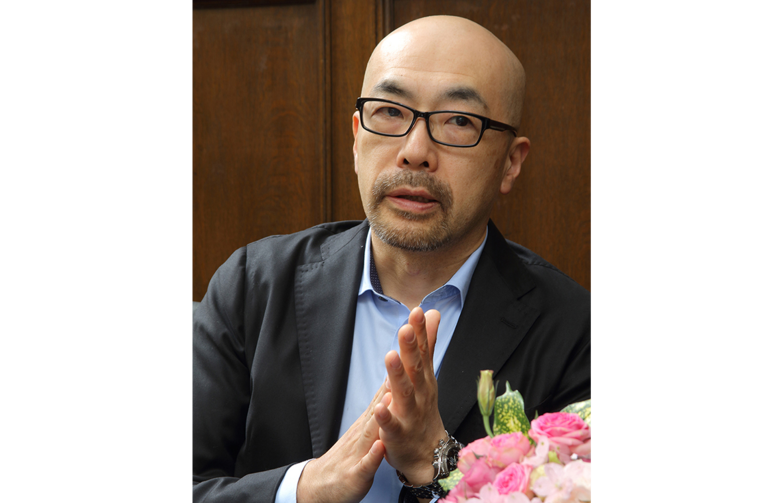Communities have long existed in the real world, but with the advent of the internet, new communities have formed in virtual spaces, growing into a massive presence that cannot be ignored.
How will online communities change communication between businesses and consumers? We asked two sharp commentators, keenly attuned to the times, to predict the future of communities and marketing.

(Affiliations as of the time of publication in "Ad Studies")
The Sharing Economy is Community-Based
Sato: Today's theme is online communities. Where shall we start?
Kobayashi: If we're talking recent topics, how about the sharing economy? Back in 2010, I supervised the Japanese translation of the book "What's Yours Is Mine: The New Business Strategy of Sharing" (by Rachel Botsman and Roo Rogers, translated by Miwa Seki, published by NHK Publishing). When it came out, I got a lot of flak. People said sharing would kill sales, or questioned if used items were even usable. But after 3/11, those voices gradually faded. That's because after the disaster, sharing movements emerged—like providing rooms to victims, or oyster farmers who lost their crops using crowdfunding to restart their aquaculture businesses. That's when sharing started being discussed with real-world relevance.
Now, with the emergence of Airbnb and Uber, the sharing economy has gained even more attention. Why has sharing spread? It's fundamentally tied to community connections. For instance, just browsing Airbnb listings is fascinating. When you search for accommodations, you might see photos and descriptions of the host's wife's specialty dishes or the books lining their shelves – it's genuinely enjoyable just to look. Users don't just use these services because they're cheap or because they don't have to own things themselves. They use them because they can connect online with people and things they couldn't meet before. The very foundation is community. If you talk about sharing without this, you're missing the point.
Sato: Young people were already talking about sharing, sharing when Kobayashi's book came out. It's not that they lack material desires, but they're not strong. Why? Because they don't have problems. If a product's role is to solve inconveniences or problems, the issues around them are mostly already solved, so they don't feel the need for new products.
Interacting with these people made me feel uneasy about advertising—a job that communicates to an undefined mass. My interest is shifting toward specific, smaller groups. Roughly speaking, my focus is moving from communication to community.

Airbnb connects travelers with hosts offering unique accommodations in over 34,000 cities across 190 countries. It's a popular community marketplace for lodging.
Kobayashi: In your book, Satonao-san, you pointed out that communication has become difficult due to information overload.
Sato: By 2010, the amount of information flowing globally had reached nearly 1ZB (zettabyte, 10 to the 21st power bytes). 1ZB is equivalent to the number of grains of sand on all the world's beaches – an extraordinary figure. Projections suggest it will reach 40ZB in four years and 60ZB by 2030. That 60ZB figure is said to be equivalent to the total amount of perceptual information sent from the eyes to the brains of all humanity in a single year. In an era with that volume of information flowing, trying to push something through advertising and get people to buy it willingly is practically impossible.
If anything can spark desire for ownership, it's tribes or communities. Sometimes a tribe and a community are one and the same; other times, several tribes form a community. Either way, people only receive and empathize with information coming from the tribes they belong to. That's the era we're in.
A few days ago, I shared a towel from a company called Ikeuchi Organic. Their 100% organic cotton towels are amazing. Mr. Kobayashi and I don't have much hair, so absorbency isn't a big deal for us (laughs), but the feel against the skin and the lightness... it's like being in heaven.
When I wrote about it, it resonated strongly with my tribe—people who know what I typically value—and apparently sold better than when it was featured on TV.
Seeing an ad for Ikeuchi Organic probably wouldn't make much of an impression. Also, just sharing something—like retweeting or liking it—doesn't really resonate with the general public. It's because it's shared among friends or your tribe that empathy is born and you want it.

Kobayashi: The sharing economy gains support because it shares not just things, but experiences and mindsets too. There's a company in America called Etsy. They run a marketplace where housewives buy and sell handmade items. What's being bought here isn't so much the accessories as the empathy. There's a story behind it, like "I just got divorced recently, but I'm renovating my garage and having fun making jewelry with my daughter." You can see the faces of the people supporting her. Just like buying "the story of staying there" on Airbnb, users on Etsy are buying the stories shared within the community. Seeing money actually start circulating this way makes it clear that products you can push without empathy are limited. I'll get yelled at by advertising agencies for saying this, but mass-pushing empathy just doesn't work anymore.
Sato: Agencies have been focused on increasing exposure through attention for over a century now, so they lack that awareness. Even if you increase exposure, it just becomes noise, but their minds are stuck in "exposure mode," so they don't realize they're being ignored. It's about time they moved beyond that mindset.
I also think story consumption is getting tough. Back in the day, smooth talkers made great ads. Once story consumption gained traction, those smooth talkers started crafting stories too. That's when the stories started feeling forced and hard to relate to.
Kobayashi: Creators' overthought stories do feel tacked-on and don't work well. What matters is engagement. Volkswagen was a company everyone respected, but the emissions scandal tore that reputation to shreds. Conversely, if a company keeps its promises to users, its fan community will naturally weave its own stories.
Can online communities sustain themselves?
──As consumer behavior driven by communities gains prominence, how will online communities evolve?
Kobayashi: There are various types of online communities. The people involved in Firefox development are scattered worldwide, building a community around the idea of "let's make an amazing browser." It's more of a loose community where people can leave or join freely. On the other hand, some communities start with a real-world base and use online platforms as a supplement. The latter tend to be tightly knit and deep, but they can be exclusive and difficult for newcomers to join. It really varies, so it's hard to generalize.
Sato: I have some reservations about online communities and prioritize real-world connections first. It's not just communication; it's "face-to-face communication." Essentially, meeting in person and seeing each other's faces is crucial, with online interactions serving as a supplement.
As I mentioned earlier, there's too much information now, so exchanging information with people rarely brings joy. But does that mean stories are the solution? Not exactly. Even when we see the same thing, the story I perceive and the story you perceive, Kobayashi, are subtly different. People don't form strong bonds based solely on shared empathy for a story. Ultimately, where do bonds form? In real life. Empathy is an emotion, and there are many emotions you can't understand without meeting someone face-to-face.
Kobayashi: I agree. Face-to-face interaction exchanges not just text-based information, but also things that can't be put into words. Like reading someone's expression and thinking, "This guy's lying." Communities deepen through repeated interactions like that. So even if the initial connection was online, incorporating real-life interaction somewhere is better.
Using the web is now like using the phone. As a tool, it's surpassed critical mass, so we should treat it as a given and focus on how to extend or complement the power of real-life interaction.
If you get that wrong and try to do everything online, it creates distortions. Haven't you noticed a lot of people lately casually sending work requests via email alone? Like, they just changed the name in a template.
Sato: Or they change the name in the header but leave the rest of the text as it is, so it still has someone else's name in the body (laughs).
Kobayashi: Exactly. Using templates for efficiency is fine, but when the ball coming your way is light, you end up playing it lightly too. That won't deepen relationships or build a community.
Sato: Of course, I don't think deep communication is impossible online. Empathy is truly an emotion, so positional talk doesn't resonate, and seeing copy-pasted text conveys nothing. Empathy only happens when you get the other person's real experience, their individual feelings. For example, just saying "It's cold today" is hard to empathize with, but if someone says, "I was in Hawaii until yesterday, so today feels cold," that includes their personal feeling, so makes you think, "That must be rough. Hope you don't catch a cold."
If you really want to, you can achieve this online too. Still, meeting face-to-face makes it easier to see each other as individuals. The most straightforward example is when you drink together. The reason drinking communication has long been valued in organizations isn't entirely wrong.
*The full text is available on the Hideo Yoshida Memorial Foundation website.











